

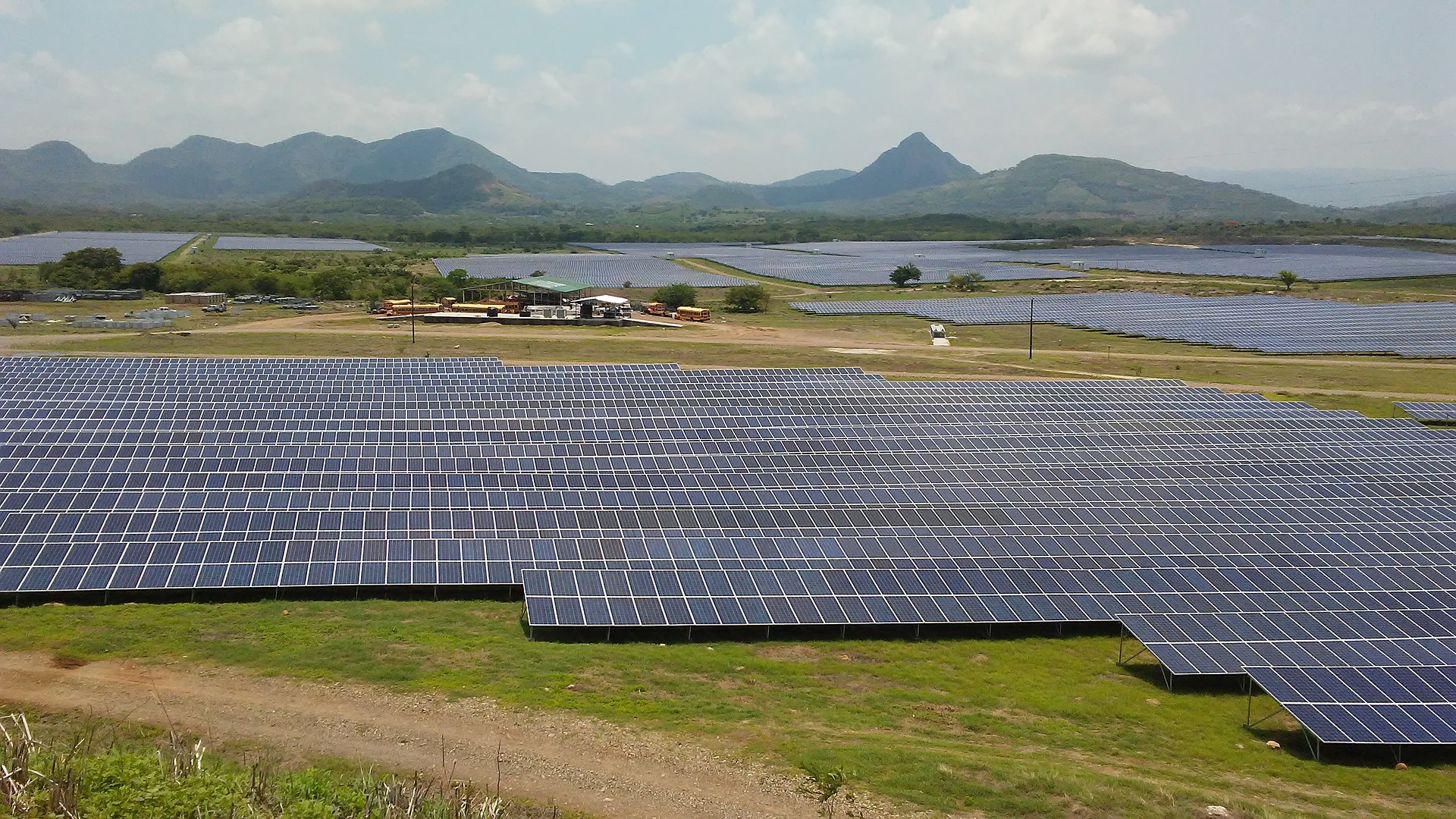
Understanding Utility-Scale Solar Project Impacts on Wildlife
By Lucas Wandrie, Sr Wildlife Ecologist, WSB
Although it is well-known that wind-energy projects have need for wildlife services, it is less known that wildlife services provide value for utility-scale solar projects. Wildlife services may be needed at different phases of project development depending on state guidelines. State permits, project off-takers or financiers often require wildlife assessments for utility-scale solar projects. Learn more about what you need to be aware of at each stage of a project.
Desktop
Biological assessment or site characterization study
A biological assessment or site characterization study is recommended to identify biological resources that may be impacted by the project including wildlife and fish communities, sensitive habitats, special status species and their habitats, and special management areas. The information gained from biological assessments and site characterization studies can help determine if additional field studies for special status species or sensitive habitats or special status species desktop-level habitat assessments are recommended, and guide project layouts.
Pre-Construction
Raptor nest and eagle nest surveys
Raptor nests, including those of eagles, are protected by the Migratory Bird Treaty Act (MBTA) and eagle nests are further protected by the Bald and Golden Eagle Protection Act (BGEPA). If project construction is planned during the nesting season, it is recommended that raptor nest surveys be conducted. The nesting season varies based on region with earlier start dates in the south. Also, raptor nest surveys are typically conducted prior to leaf-on to locate nests easier. Below are two examples of the need for such surveys.
Northern Harrier

Although many raptor species nest in trees, some species such as the northern harrier (Circus hudsonius) nest in herbaceous areas. The northern harrier is state listed in many states, and some states such as Ohio require nesting surveys when construction activities occur in herbaceous areas during the nesting season.
Bald and Golden Eagles
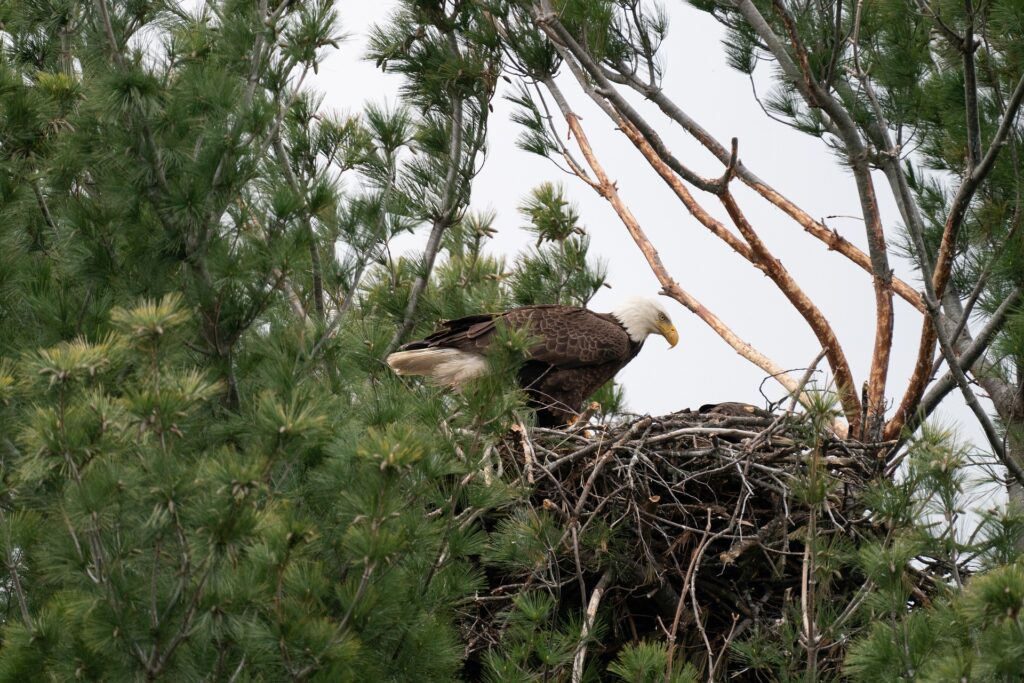
Bald (Haliaeetus leucocephalus) and golden (Aquila chrysaetos) eagle nests have additional protective measures and guidance under the BGEPA. The U.S. Fish and Wildlife Service guidance recommends a no disturbance buffer of at least 660 feet surrounding the nest, whether the nest is active or an alternate nest, unless similar activity occurs closer to the nest. If similar activity occurs closer than 660 feet from the nest, a no disturbance buffer of the same distance as the activity can be used. As the process to remove an eagle nest is long and costly, an eagle nest survey can help identify if there are any in the area that could be avoided during the site design process or during the construction process.
Bat habitat assessment
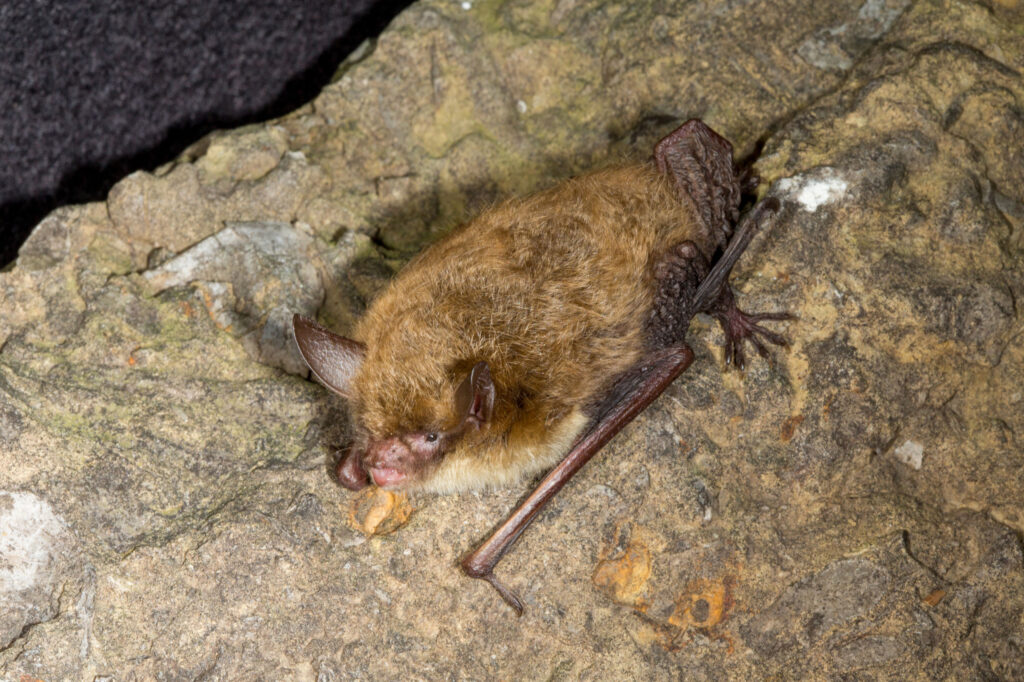
Many bat species roost in trees during their respective active seasons; some of these species are protected at the state or federal level. As such, tree removal within the ranges of protected bat species requires measures to avoid or minimize adverse impacts or incidental take. Avoidance or minimization measures include removing trees outside of the protected species’ active seasons, conducting habitat assessments to determine if the trees are potentially suitable roost sites, presence/probable absence surveys, or in some instances tree removal is entirely prohibited. Bat habitat assessments are often conducted when tree removal is proposed to occur during the active seasons (April 1 to October 31) of the federally endangered Indiana bat (Myotis sodalis) and the federally threatened northern long-eared bat (Myotis septentrionalis). The ranges of the Indiana bat and northern long-eared bat extend throughout much of the eastern United States. Some states, such as Missouri, have additional guidance measures that need to be followed regarding tree removal within the range of federally listed bat species. The bat habitat assessment provides information used to determine where tree removal can occur and whether tree removal can occur during the active season, or if tree removal activities should be postponed. Bat habitat assessments can be conducted at any time of the year.
During Construction
Environmental Compliance
Bird nest surveys may be needed depending on the geographic region of the project, construction timing, and the habitat types where construction activity will occur. The nests of bird species are protected by the MBTA. Nesting surveys are recommended if construction activities are planned to occur in non-agricultural areas during the active nesting season. The active nesting season varies based on region with nesting activity starting earlier at southern latitudes. If active nests are observed during survey efforts, a no disturbance buffer is established until the offspring are fledged or the nest is abandoned. The size of the buffer depends on the species, with smaller buffers used for nest of common species and larger buffers used for nests of rare species and raptors.
Conclusion
Ultimately, understanding the resources within and near your project site early in project development can reduce the risk of costly design revisions as well as the risk for permitting or construction delays. Although the focus of this piece was on avian and bat-related services for utility-scale solar projects, wildlife services can also help with project-related concerns involving other taxonomic groups including invertebrates (such as the rusty patched bumble bee [Bombus affinis] and Dakota skipper [Hesperia dacotae]) and reptiles (such as the eastern massasauga rattlesnake [Sistrurus catenatus] and Blanding’s turtle [Emydoidea blandingii]). For additional questions regarding the need for and value of wildlife surveys, contact Lucas Wandrie.

Lucas has over 15 years of experience in wildlife ecology and consulting. His specialties include providing desktop and field-based wildlife services for wind and solar projects and has supported the successful completion of these projects in 34 states.
[email protected] | 612.452.0540
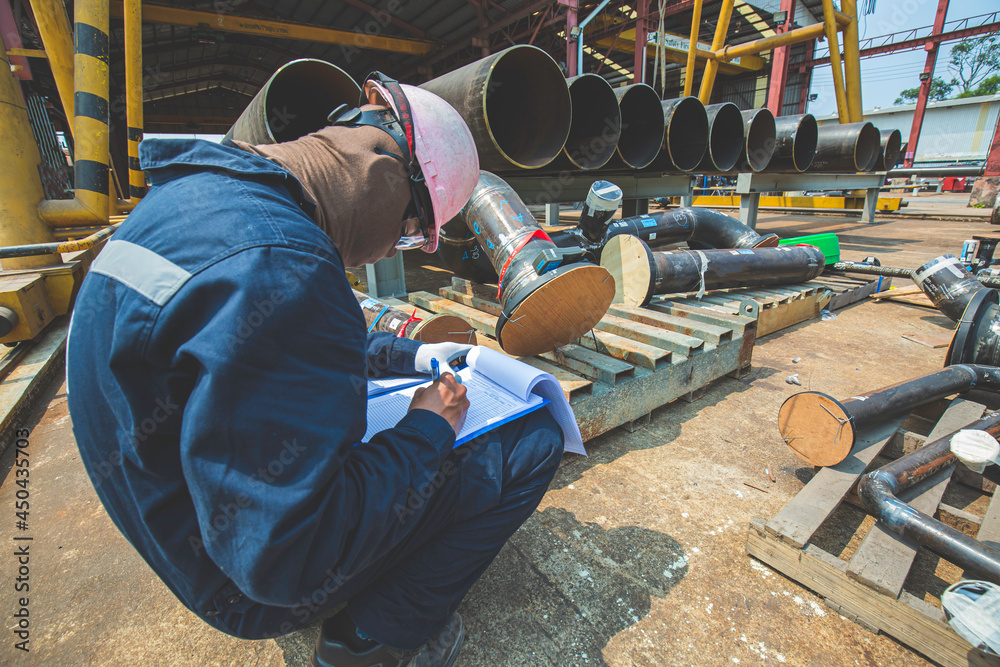
4 Takeaways from PHMSA’s Joint Pipeline Advisory Committee Meeting
Last week I tuned into PHMSA’s joint Gas Pipeline Advisory Committee (GPAC) and Liquid Pipeline Advisory Committee (LPAC) meeting. PHMSA leadership and PAC members updated the industry on new priorities and expectations. Throughout the two days of presentations, four things immediately jumped out to me.
1. How do new regulatory priorities affect your business?
It’s been more than a year since the last PAC meetings and the issuance of regulations has been on pause. With changes in the administration, PHMSA leadership, and the new PIPES Act of 2020 law, priorities have been revised. Being prepared for upcoming regulations is the best business decision operators can make.
2. What should you include in your O&M Manual to address ADB 2021-01?
PHMSA considers some sections of the PIPES Act to be self-executing provisions. However, they issued the Advisory Bulletin 2021-01 earlier this year to remind operators to include updates to their procedural manuals on how they plan to eliminate hazardous leaks and minimize natural gas releases. What manual revisions should you include by the December 27th, 2021, deadline?
3. How does the PIPES Act of 2020 affect PHMSA, future rules, and the industry?
Last December a 2,100 page appropriations bill was signed into law. That document included 34 pages of mandates to PHMSA and the industry. Decoding which sections apply and how they will affect operators can be a lengthy process.
4 . What changes will the proposed Standards Update Rule bring?
Published on January 15th, 2021, this rulemaking proposes to update more than 25% of PHMSA’s Incorporated by Reference industry standards. Adoption of these more recent specifications can help bring up to date operators, their suppliers, and regulatory bodies with the latest technologies and best practices.

WSB promotes Jim Mill to director of development – west region
Design and consulting firm WSB announced today the promotion of Jim Mill to director of development – west region. In his new role, Jim will lead operations and oversee business development efforts for the firm’s development work throughout Colorado and the western U.S.
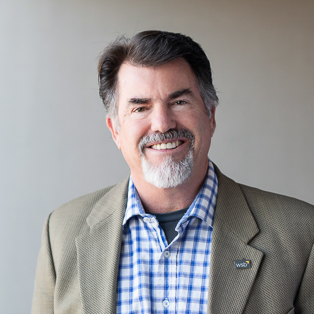
Jim joined WSB in 2018 after 15 years of running his own business and has been instrumental in the firm’s growth in Colorado. His office, based in Denver, CO, currently has staff supporting work in land development, water resources, traffic, survey, and environmental compliance.
“Jim has the ability to take an idea and make it a reality,” said Monica Heil, WSB’s vice president of municipal services. “Our clients continually leverage Jim for his skills and abilities in design, master project coordination and value engineering. He has a passion for building the correct teams to support our clients and deliver the best value, budget, and timeline for all his projects.”
Jim has over 35 years of experience in development. Prior to his time at WSB, he was president of Legacy Engineering, Inc. He started his career as an Engineer in Training (EIT) with a local Denver engineering firm.
“Over the last three and a half years, WSB has been an exceptional place to exercise and grow my skills in business while establishing a strong foundation in Colorado,” said Jim. “I am excited to take on additional responsibilities and build off of this foundation to expand in all facets of our business.”
Beyond his responsibilities in development, Jim will help lead and mentor staff throughout the region from the Denver office.
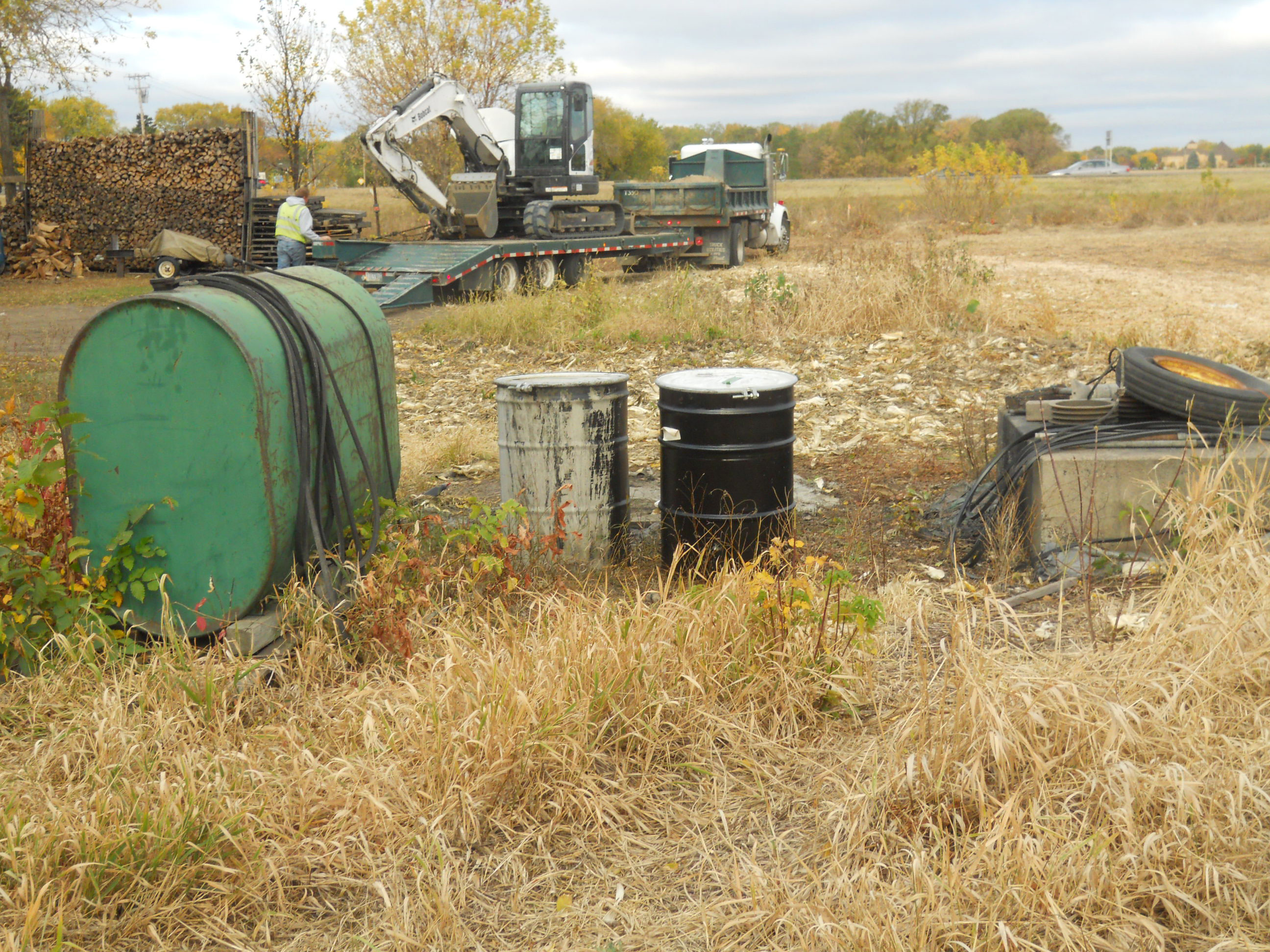
Q&A with Bart Fischer | The benefits and risk of brownfield redevelopment
Bart Fischer, Senior Public Administrator, chats with Senior Environmental Scientist Ryan Spencer about the pros and cons of brownfield redevelopment.
Q: When someone hears the term ‘brownfield’ there are a lot of visuals that come to mind, but what is an actual brownfield site?
A: That’s a good question. Brownfields are more encompassing than the traditional rundown or abandoned urban building. A brownfield is a site that has a development history which resulted in the release of contamination, often a dry cleaner, gas station, or an industrial manufacturing site come to mind. However, they can also extend to rural areas such as farmstead dumps, agricultural storage facilities, and junkyards. In general, a brownfield is any site that has documented contamination, or potential contamination, which inhibits redevelopment.
Q: Contamination in redevelopment sounds risky. What are the benefits of brownfield development?
A: There is a certain amount of risk associated with brownfield redevelopment and it varies by a community’s appetite for risk. Often, it’s a great opportunity to revitalize an area of a community that is underutilized. Those factors can strengthen the case for grant funding sources, as well.
Q: Good point. Funding is key to any project. Are there a lot of funding resources for brownfield development?
A: There are several local and federal funding sources for brownfields. Locally, funding opportunities are driven by an economic development angle and hinges on the project bringing more jobs, affordable housing, and capital investment into the area. Federally, funding sources are generally more environmentally driven and focus on cleaning up the site or a targeted area.
Q: Is brownfield redevelopment a trend right now?
A: I would not say it’s a trend right now. Rather, successful brownfield redevelopment has been occurring for many years. I see this trend continuing as developers and lenders better understand risk, funding sources are available, and undeveloped land is less common. Coming out of the pandemic, it seems that more and more brownfield redevelopment is occurring within suburban communities. There are various factors that go into both greenfield and brownfield redevelopment. It depends on what’s driving the market.
Q: What is attractive about brownfields?
A: They can drive growth and prosperity in a community. When you take an underutilized part of a community and revitalize it, it can spur more development in the area. It can also provide more housing and commercial development that leads to an increased tax base. And it’s also better for the environment – cleaning up soil or groundwater contamination is always an added benefit.
Q: What is the most important thing a community should know and how can they prepare for brownfield development?
A: It all comes back to managing risk. Understanding the site and collecting data is where I always recommend people start. Working with a trusted environmental consultant and performing the proper due diligence (e.g. Phase I Environmental Site Assessment (ESA) and Phase II ESA) allows for a deeper understanding of the site and the work that would need to be performed. There are brownfields in every community, and I think there are always benefits and opportunities associated with taking something blighted and turning it into an economic driver.

Bart Fischer has over two decades of experience in public administration. Throughout his tenure, he’s worked in five Minnesota communities as the city or assistant city administrator. Bart joined our firm in 2019 as a senior public administrator and focuses on lending his public service expertise to our clients.
[email protected] | 651.485.1839

Ryan Spencer has over 13 years of experience in the environmental consulting industry servicing both public and private sector clients. He is proficient in the planning, management, and completion of environmental due diligence, remediation, and brownfield grant writing.
[email protected] | 612.723.3644
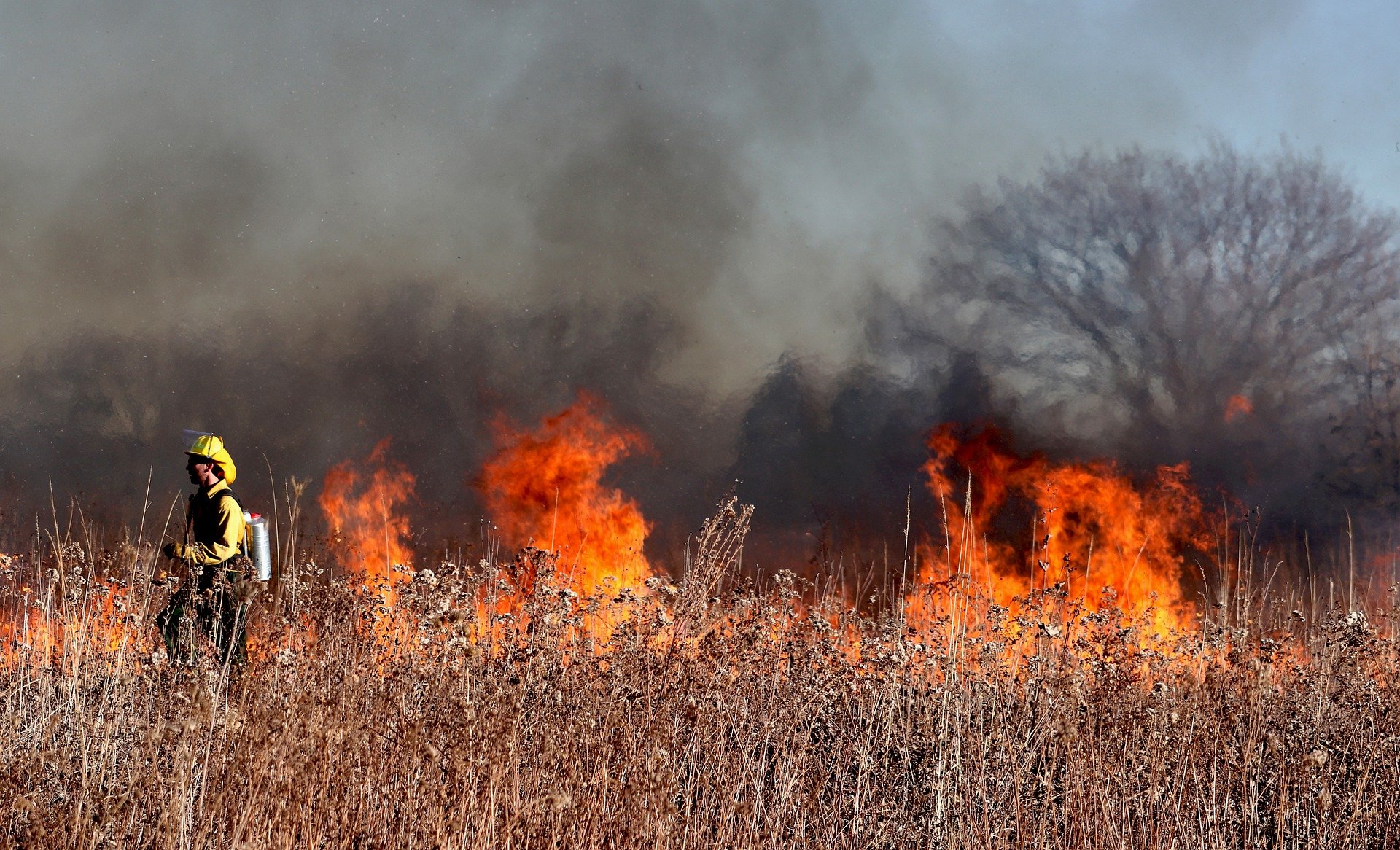
The Impacts of Wildfire and Planning for Extreme Climate Events
By Tony Havranek, Director of Fisheries, WSB
Wildfires are dominating headlines this summer as cities across the United States are dealing with the dangerous air conditions created by the fires in Canada. Wildfires can be incredibly scary, ushering in unwanted destruction and loss of property, but it can also be a tool for rebirth and habitat restoration.
As an ecologist, I have used controlled fire as a tool. Taking a long view of plants and wildlife, many species rely on a natural cycle of disruption that includes fire, wind, animals and more. The Jack Pine, for example, requires fire to help open its cone and release seeds. Many invasive species don’t require cycles of disruption, on the other hand, and thrive among human development.
What are the Risks that Wildfire Bring?
The clearest risk with any uncontrolled fire is destruction of life and property. Wildfires are incredibly dangerous, and this summer’s hot, dry weather helped exacerbate fires in the north. Furthermore, as climate change brings more extreme weather conditions, the carbon released from large wildfires drives further warming, feeding the cycle for more extreme weather events.
Poor forest management and extreme weather can also cause fires to burn more intensely. Too much fuel load – material in a given area that burns and can dramatically increase the intensity of a fire –means that a fire may burn faster and hotter. Intense wildfires can destroy soil to the point it is hydrophobic, repelling water instead of absorbing it. It can also destroy good bacteria and fungi in topsoil. The destruction of soil from extreme wildfires can make it more difficult for new plants to grow, cause soil erosion that pollutes streams and waterways, increase the risk of flash flooding and harm local ecosystems.
As fire crews work to fight wildfires, that can also bring some environmental risk. The flame retardant used to control the spread of fires can be toxic to certain plants and animals. And when fire crews travel from one part of the country to another to fight large wildfires, they can unintentionally introduce invasive species to new regions.
What are the Environmental Benefits?
When we read about wildfires in the news, the stories are often focused on destruction, but fire can bring environmental and ecological benefits too. Because humans have disrupted many of the natural fire cycles, burning can help reset plant species. Plants are an essential building block to ecosystems, and new plant growth can help reattract or grow the population of numerous native wildlife species. Moose, bears and deer are some of the species that can be positively impacted by regeneration after fires.
Better Planning for Fires and Other Natural Disasters.
While proper forest management and use of controlled fire helps mitigate the risk of destructive wildfires, climate change and human activity means wildfires, unfortunately could become more commonplace in certain parts of the world. Planning for and building defensible space and structures reduces risk from wildfires. Working with municipalities at WSB, we often talk about planning for flooding, erosion, hurricanes and other extreme weather events to protect infrastructure, people and native wildlife.
For communities, especially those that face a greater risk of wildfire due to climate change and other factors, assessing the threat of fire and integrating defensible space and structures into planning is critical. I expect that to become a more prevalent consideration as part of innovative municipal planning in future decades.
Havranek has nearly 20 years of experience in the natural resources field. Prior to his time at WSB, Tony helped develop federal policies with the U.S. Fish and Wildlife Service and worked with tribal communities throughout the Midwest on their natural resources needs. He is recognized throughout the industry for his forestry, water quality, fisheries, aquatic and terrestrial vegetation, wetlands and wildlife expertise.
[email protected] | 651.286.8473

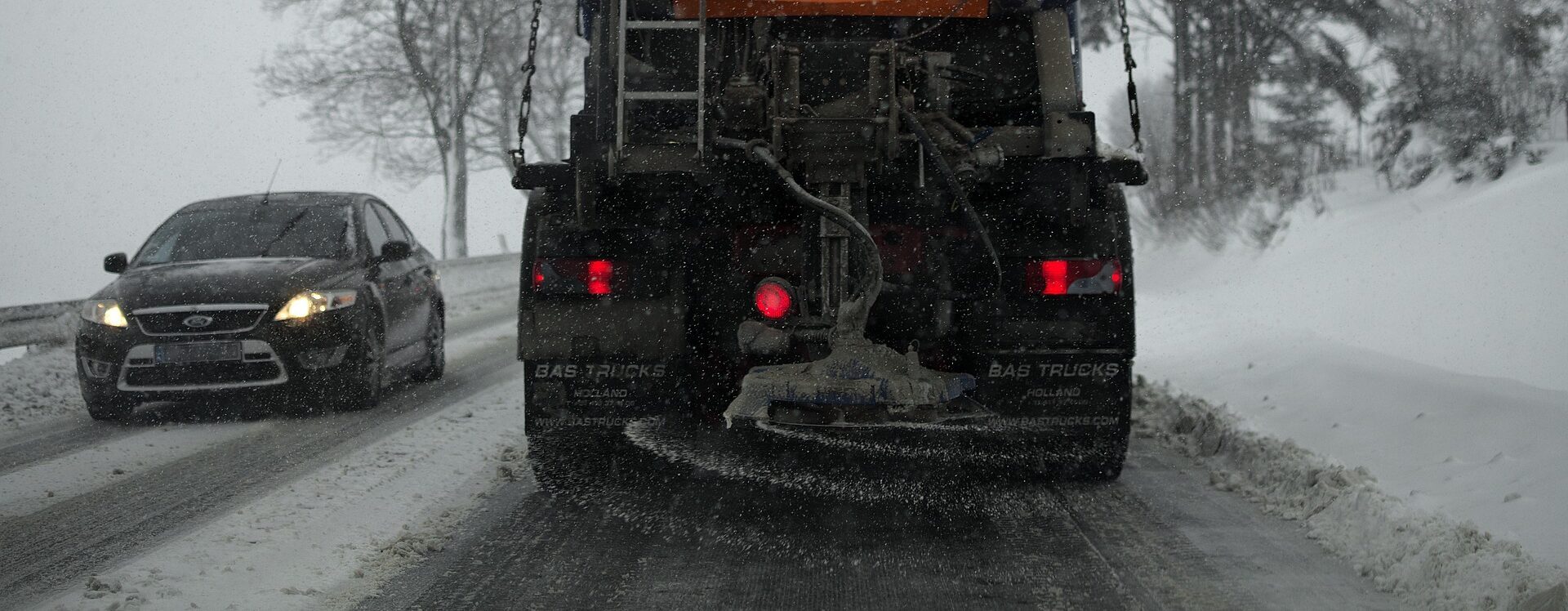
The Road to Reducing Chlorides
By Chris Petree, Director of Operations, Alison Harwood, Director of Natural Resources, and Ray Theiler, Water/Wastewater Engineer
Understanding chlorides and making responsible decisions about them is challenging at best. They serve important functions in our everyday life, but they can also create lasting damage to the world around us. Learn more about how the chlorides are used on a day-to-day basis, what the long term affects are, and what options are available to properly manage them.
What are chlorides and how do they play a role in our lives?

Simply put, chlorides are salt. They play a big role in Minnesota life. Primarily, they are used in our water softeners to treat the state’s notoriously hard water and for de-icing the roads during winter months.
What negative impacts does over usage of chloride have?
Overuse of chlorides can affect our communities in a variety of ways. Understanding their full impact can be nearly impossible to calculate. Below are just a few of the ways people should be aware of.
Community water supplies: Many of our communities get their water from groundwater wells. They pull water from the ground to provide a public water supply. Excessive use of chlorides leads to groundwater contamination which makes its way into lakes and rivers and ponds, ultimately infiltrating the groundwater. When the groundwater develops high chloride levels or contamination, it becomes a safety issue that communities need to address.
Plants and wildlife: When concentrations of chlorides get high enough, it begins to kill plant life and setting off a domino effect in the eco systems. High levels of chloride destroy plant roots in aquatic systems resulting in fewer plants rooted to the lakebed. The lack of supportive root systems compromises bed stabilization and leads to more opportunity for sediment to be churned up, resulting in reduced water transparency and water quality. Salt used on roads can negatively affect wildlife and local pets. These animals often eat the salt used on roadways which can lead to illness or death. Even animals who need added salt in their diet are in danger, they are attracted to roadways (i.e., deer) causing safety concerns for the animals and drivers.
Infrastructure and transportation: Regardless of the application, we know that salt can be destructive and can lead to damage. Metal is particularly susceptible to salt damage.
- High levels of chlorides on the streets have historically had a negative affect on vehicles. The salt on the roads builds up on the vehicles leading to premature rusting.
- Pumping water with high chloride levels through pipes can lead to corrosion within water distribution systems, which in turn leads to issues with lead and copper in our water system.
- The chlorides in the water cause premature degradation and failures of storm sewer systems, specifically in catch basins and manholes.
What are the benefits of reducing chloride usage?
The benefits of reducing chlorides are a long list that includes protecting the environment, the health of the community, and local infrastructure. However, often cost is the factor that really creates urgency around reducing chlorides.
Introducing the chlorides into the environment will ultimately require repair and rehab of groundwater systems, storm water systems, water infrastructure, wetlands, etc. All these systems have costs associated with them.

Acquiring the salt is another expense. Whether a small city, county, or state, the budget needed for de-icing is huge. Salt and de-icing chemicals are not produced locally. They can only be delivered by truck, train, or barge from the South. Taxpayer dollars are the how this transportation is funded, reducing chlorides frees up tax dollars to support other needs.
How to do you continue to maintain safe roadways in the winter, while meeting environmental regulations?
Technology and training are key.
It used to be that a salt truck was sent out with only a lever and a couple of dials for the operator to control salt usage. The technology and equipment currently available allows operators to apply the exact amounts of de-icing chemical needed based on precipitation type, air temperatures, and pavement temperatures. It is critical these staff are trained to use the equipment properly. Equipment and training will require an upfront investment but will ultimately save significant amounts of money on resources and damage repair done in the long run.
Some communities are exploring alternative de-icing chemicals beyond chloride. For example, you can mix in beet juice, molasses, sand, etc. There are many alternatives and mixtures that are less harsh on the environment, more cost effective and benefit communities in the long term.
How can communities help reduce chloride usage overall?
- Make sure water softeners are functioning efficiently or upgrade to a higher efficiency model.
- Explore those alternatives to road salt.
- Educate: There are resources and trainings available.
- MPCA Smart Salt Training: Educate businesses, property managers and residents. Its important communities take an active role in chloride reduction.
- Involvement: Get communities involved by including information in community newsletters.
WSB can evaluate chloride usage and make recommendations for how to move forward. Our staff have the experience and knowledge, from years and years working at public agencies, that we can provide operational assistance and assessments when it comes to communities and planning.

A Message from our CEO on our 26th Anniversary
In honor of WSB’s 26th year in business, I wanted to take a moment to reflect on our past and share the history of why our anniversary is so important.

In October 1995, the founders of WSB made the decision to leave the firm we were with after they stopped investing in technology, staff and clients. When you remove the tools that are necessary for your team and client success, the impacts are significant. For us, it was the push we needed. We came together to create a new type of firm, one that is centered on passion, optimism, and a bold vision to be the most authentic firm we can be. We have spent the last 26 years developing that mission, focusing on solid client relationships, encouraging staff to be curious and determined, and consistently pushing to be at the forefront of our industry.
When I look back, WSB has become much more than the firm we originally set out to build, and that is because of each staff member, client and partner we have worked with over the years. We believe in delivering what’s next for our clients. We live our mission and we work together during good and more challenging times to support our communities. I am grateful for how our relationships have stayed consistent and have helped us work together to navigate the past 18 challenging months.
Every year on our anniversary, we celebrate all we have accomplished, and look forward to the future. We have built a supportive culture that puts clients and people first – and that’s important to celebrate. WSB will continue to invest in our staff, our clients, and cutting-edge tools, because that is the commitment we made nearly three decades ago. I want to take today to celebrate, and I look forward to finishing 2021 strong, and welcoming new opportunities for partnership and new connections in 2022.
